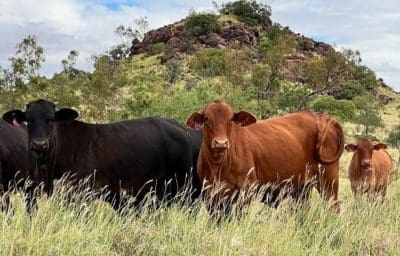WORLD Zoonoses Day held each year on 6 July, seeks to raise awareness of Zoonotic diseases – those which can be spread between animals and humans – and promote prevention strategies that span human, animal and ecosystem health.
This year’s World Zoonoses Day observed on Sunday highlighted the importance of coordinated action across animal and human health sectors to protect Australia from the ongoing threat of zoonotic diseases.
 With more than 60 percent of known infectious diseases in humans originating from animals and around 75pc of emerging infectious diseases having zoonotic origins, World Zoonoses Day shines a light on the critical need for collaboration.
With more than 60 percent of known infectious diseases in humans originating from animals and around 75pc of emerging infectious diseases having zoonotic origins, World Zoonoses Day shines a light on the critical need for collaboration.
The Department of Agriculture, Fisheries and Forestry’s chief veterinary officer, Dr Beth Cookson, and the Department of Health chief medical officer, Professor Michael Kidd, raised the importance of the link between human and animal health.
“Australia’s robust animal health system and biosecurity arrangements are key to protecting both animal and human health,” Dr Cookson said.
Zoonotic diseases such as H5 high pathogenicity avian influenza (HPAI) and rabies continued to challenge health systems around the world, she said.
Australia is currently the only continent free from H5 HPAI and rabies. However, both diseases are present in the near region, underscoring the importance of strong biosecurity, regional cooperation, and ongoing preparedness.
“Zoonotic diseases remain one of the most persistent and complex health challenges facing the world. Our response to zoonotic threats must be collaborative and science-based, bringing together multiple sectors to manage shared risks,” Dr Cookson said.
Whole systems approach
Prof Kidd said the One Health approach had taken on a more important role in recent years.
 “Although One Health is not a new concept, it has become more important to adopt a whole-systems approach to help combat the emergence and spread of zoonoses,” Professor Kidd said.
“Although One Health is not a new concept, it has become more important to adopt a whole-systems approach to help combat the emergence and spread of zoonoses,” Professor Kidd said.
“The interim Australian Centre for Disease Control is achieving One Health outcomes through the whole-of-government response to H5 HPAI, where health, agriculture and environmental agencies and other key stakeholder organisations are collaborating to prevent, detect, prepare and manage the threat of avian influenza in Australia,” he said.
The Australian Government works closely with neighbouring countries across the Asia-Pacific to deliver surveillance, capacity-building, and technical support programs that enhance biosecurity outcomes.
These partnerships that span borders and sectors are central to ensuring that Australia and our region is well-prepared to detect, prevent and respond to zoonotic disease threats—now and into the future.
Source: DAFF

HAVE YOUR SAY